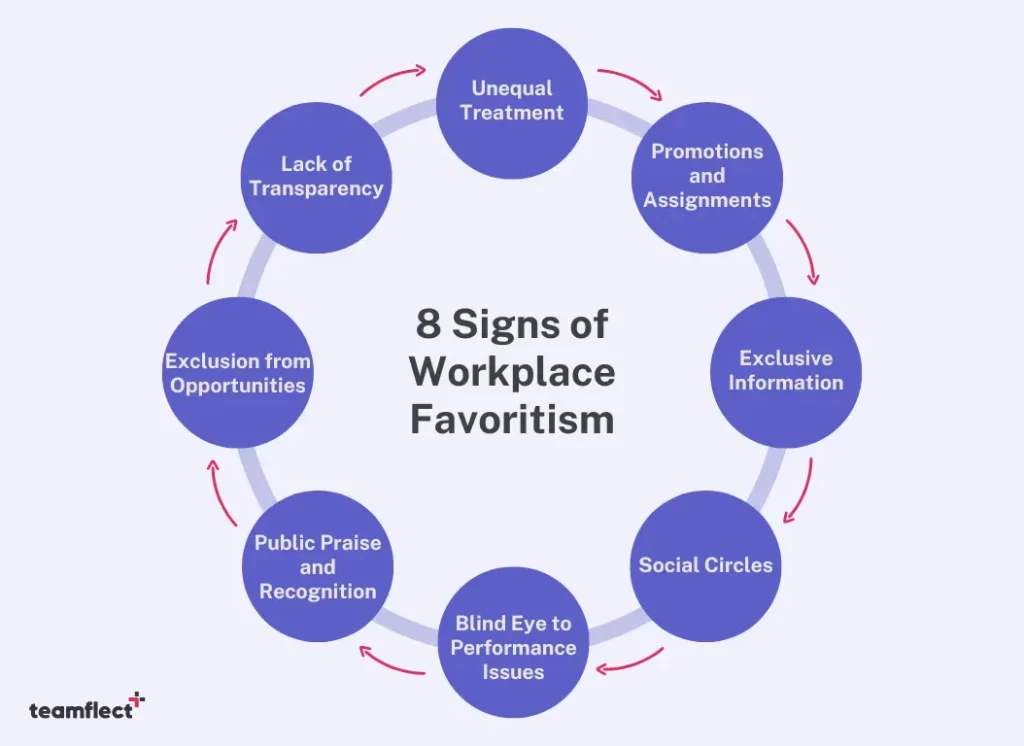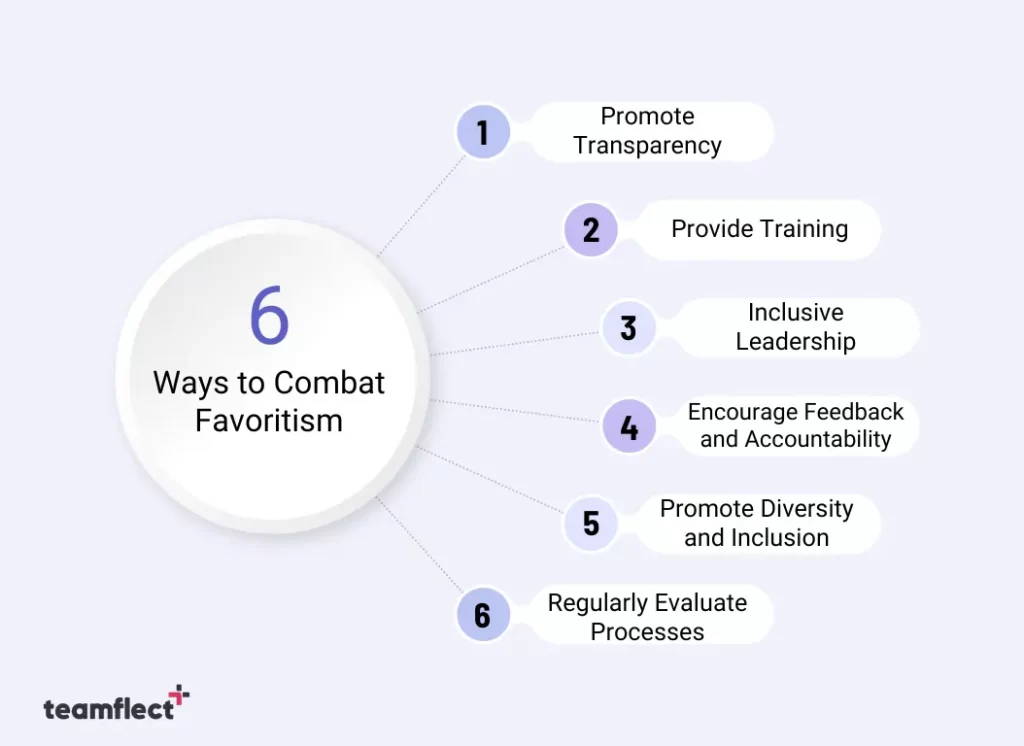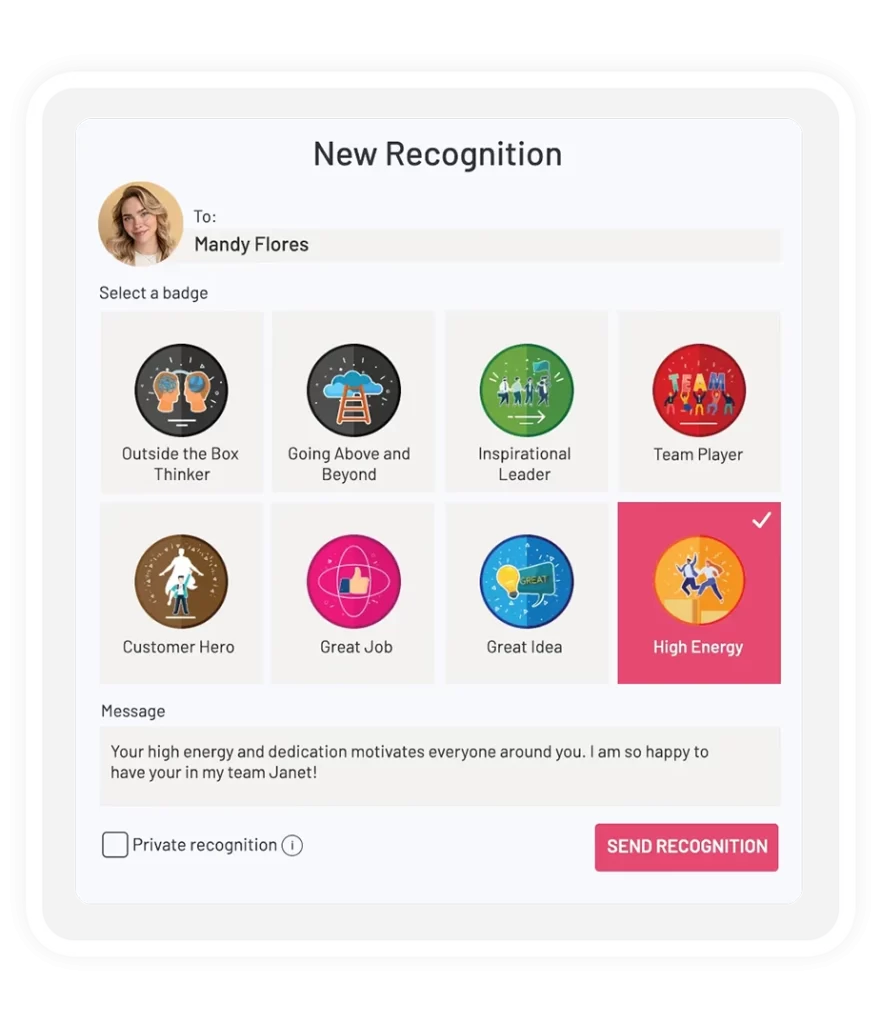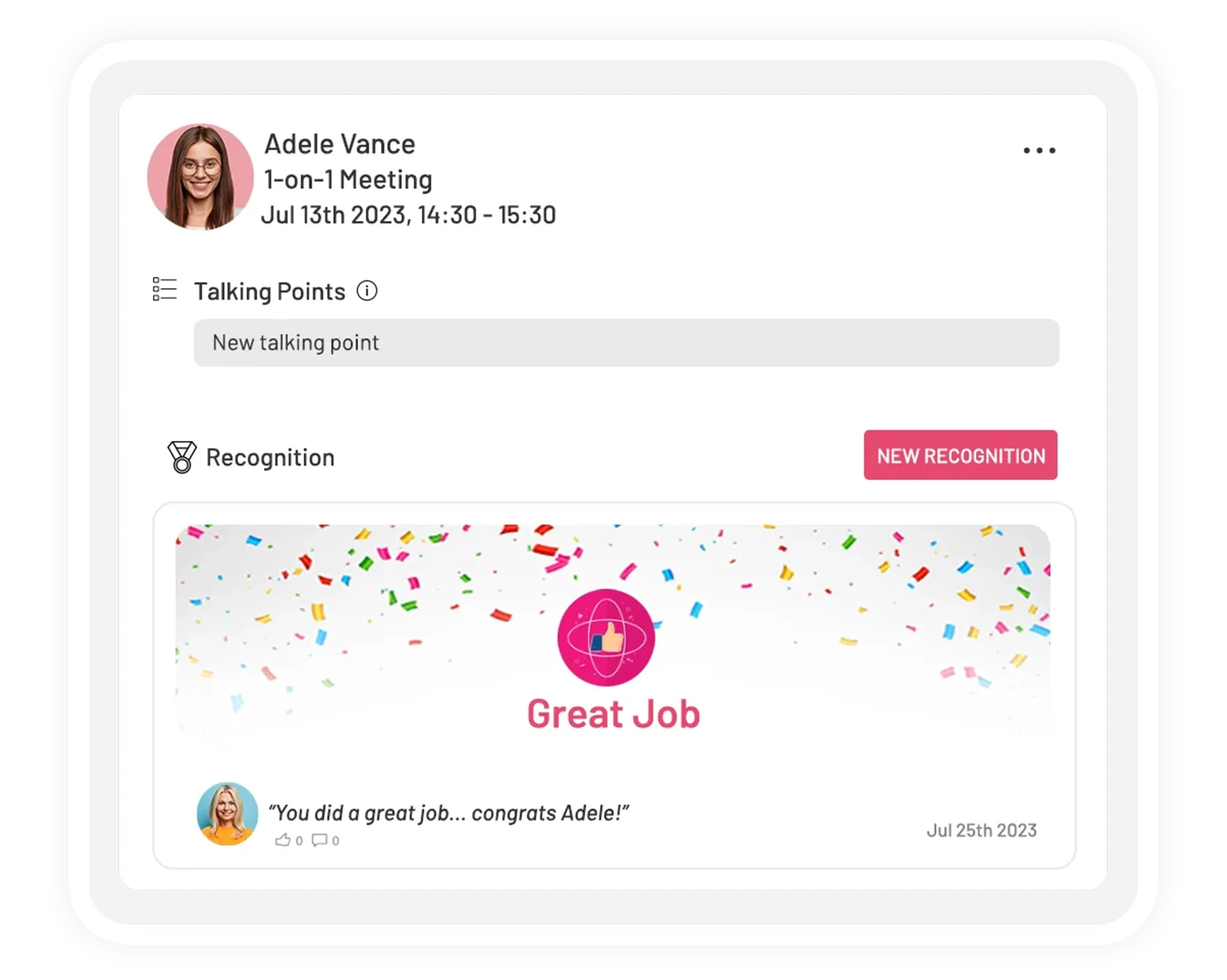Work dynamics can often be complex and intricate to manage. Favoritism at work is definitely one of the main reasons why. Among many challenges of navigating modern-day work and hustle culture, favoritism can be a sticky balance.
Whether subtle or overt, favoritism can permeate organizational cultures and overshadow the work being done regardless of how successful or fulfilling it is in itself. Favoritism can be dangerous as it is very likely to push your hardworking employees into feeling undervalued and possibly looking for that value elsewhere.
Let’s take a look together into how favoritism manifests in the workplace, take a look at its examples, strategize together how you can combat favoritism at work, and finally how you can properly encourage and celebrate your employees without falling into favoritism!
Table of Contents
Signs of Favoritism In The Workplace
To identify favoritism at work can be a challenging task especially if the signs are subtle and you feel like maybe you’re reading too much into simple actions. This is a normal experience, as favoritism often operates right under the surface. So here are some signs that may be indicators of favoritism in your workplace.

1. Unequal Treatment
Noticeable differences in how individuals are treated, such as preferential access to resources, opportunities, or flexible work arrangements, without clear justification based on performance or qualifications can be one of the first indicators.
An inequity of this kind is guaranteed to raise questions on favoritism and can breed resentment amongst employees not only to employers but to fellow employees as well, leading to disruption in team dynamics and collaborative spaces.
2. Promotions and Assignments
Regularly observing certain individuals receiving promotions, desirable assignments, or opportunities for career advancement, despite lacking the requisite skills or experience compared to others who are overlooked is another sign.
Instances like these can create a sense of disillusionment and frustration among the rest of your employees who may be more competent in their roles, leading to the feeling that their efforts are unrecognized and decreased employee engagement over time.
3. Exclusive Information:
Privileged access to information or decision-making processes may be granted to favored employees, often leading to them being more informed or involved in key discussions and initiatives.
This takes away the fair right of other employees who can bring different perspectives to the table in such discussions, creating an environment of lack of diversity that will hinder productivity and efficiency in an organization.
4. Social Circles:
Favoritism can manifest through social connections as well, with those who are part of the inner circle or have personal relationships with decision-makers receiving preferential treatment in terms of recognition, support, and advancement.
This will inevitably perpetuate a culture of favoritism where it undermines other individuals who may actually be showing more competency. Ultimately, favoritism in this way will also lead to stifled diversity and innovation in an organization.
5. Blind Eye to Performance Issues:
Tolerating subpar performance or behavioral misconduct from favored individuals, while others are held to higher standards or face repercussions for similar actions can also be a dangerous type of favoritism.
This is because performance issues are such a clear sign of undervalue for those who do have higher standards. Those who have to show better quality performance go unnoticed whilst others are not held to the same standard, and likely having to pick up the burden of those who are favored is surely going to create major frustration.
6. Public Praise and Recognition:
Favored individuals may consistently receive public praise, recognition, or awards for their contributions, even if their achievements are comparable to or less significant than those of their peers.
The unfair distribution of recognition and reward is very likely to jeopardize the retention of top talent within your organization and will contribute directly to your organization’s sustained success.
7. Exclusion from Opportunities:
Certain individuals being systematically excluded from opportunities for career development, training programs, or high-profile projects, despite their qualifications or expressed interest is one of the clearer signs of favoritism at work.
This can lead talented employees to feel demotivated to put out quality work and the sense of undervalue can push them to look for other opportunities. If organizations are not careful, favoritism can be one of the main reasons why employee turnover rates are high and retention is low.
8. Lack of Transparency:
Instances where decision-making processes, particularly regarding promotions, raises, or performance evaluations, lack transparency or appear arbitrary, leading to speculation and distrust among employees.
Since the employees in this case are not included fairly in such processes, lack of transparency can raise question marks on whether there is any favoritism and lead to employee disengagement.
These are some signs that can indicate favoritism at work, whether they are experiences collectively or individually. It’s essential for employees and employers alike to remain vigilant and address any issues that might arise in relation to favoritism.
Examples of Workplace Favoritism
To add to the signs of favoritism at work, let’s also take a look at some examples to paint a clearer picture.
- Unequal Treatment: For instance, imagine two employees in the same department requesting to work remotely on Fridays. One employee, who happens to be close friends with the team leader, is granted the request without question, while the other employee, with a similar workload and performance, is denied the same opportunity without a valid explanation.
- Promotions and Assignments: Consider a case where a less-experienced employee is consistently assigned to high-visibility projects over more qualified colleagues. Despite lacking the necessary skills and experience, this individual continues to receive promotions and plum assignments solely because of their personal rapport with upper management.
- Exclusive Information: A select group of employees is invited to closed-door meetings with senior executives to discuss upcoming organizational changes. These individuals gain valuable insights and have a say in decision-making, while the rest of the team remains in the dark, leading to speculation and resentment among those who are left out.
- Social Circles: The CEO regularly plays golf with a particular group of executives. As a result, these executives receive preferential treatment in terms of bonuses, raises, and career advancement opportunities, despite their performance being on par with or even below that of their colleagues who are not part of the CEO’s inner circle.
- Blind Eye to Performance Issues: Suppose a team leader consistently ignores the tardiness and poor performance of their favorite employee, making excuses for their behavior and shielding them from disciplinary action. Meanwhile, other team members face consequences for similar infractions, creating a sense of unfairness and frustration within the team.
- Public Praise and Recognition: In a company-wide meeting, the CEO lavishes praise on a particular employee for a successful project outcome, while failing to acknowledge the contributions of the rest of the team who worked tirelessly on the same project. This public display of favoritism not only undermines team cohesion but also diminishes the morale of those overlooked.
- Exclusion from Opportunities: For example, a manager consistently overlooks certain employees for training programs or leadership development opportunities, instead favoring individuals who share their demographic background or personal interests. This exclusionary behavior not only deprives deserving employees of growth opportunities but also perpetuates a homogeneous workforce culture.
- Lack of Transparency: Consider a company where promotions are seemingly awarded arbitrarily, without clear criteria or explanation. Employees are left wondering why some colleagues are elevated while others with comparable qualifications are passed over, leading to speculation, mistrust, and a sense of disillusionment with the organization’s leadership.
How To Combat Favoritism At Work?
There are several ways you can eliminate favoritism at work.

- Promote Transparency: Encourage open communication and transparency in decision-making processes, especially regarding promotions, assignments, and resource allocation. Clearly define criteria for advancement and ensure that they are applied consistently and fairly across your organization. Establish clear policies and guidelines that support this.
- Provide Training and Education: Offer training programs to raise awareness about unconscious bias, favoritism, and the impact they can have on overall workplace dynamics. Equip your managers and employees with the skills and knowledge they need to recognize and address these issues effectively.
- Foster Inclusive Leadership: Cultivate a culture of inclusive and democratic leadership, where managers lead by example and demonstrate fairness, impartiality, and respect for all employees. Encourage leaders to build relationships based on merit and performance rather than personal connections. Model these actions and lead by example.
- Encourage Feedback and Accountability: Create mechanisms for employees to provide feedback and raise concerns about favoritism or unfair treatment without fear of retaliation. Hold managers and leaders accountable for their actions and decisions, and address any instances of favoritism promptly and transparently.
- Promote Diversity and Inclusion: Embrace diversity and inclusion as core values of the organization and actively work to create a diverse and inclusive workplace where all employees feel valued, respected, and supported. Foster a sense of belonging among employees from diverse backgrounds and perspectives.
- Regularly Evaluate Processes: Regularly review and evaluate organizational processes and practices to identify and address any potential sources of bias or favoritism. Look for opportunities to streamline decision-making processes and increase transparency to minimize the risk of favoritism.
How Do You Recognize Your Team Without Showing Favoritism?
Establish Clear Criteria: Set clear and transparent criteria for recognition. Make sure everyone understands what constitutes excellent performance such as meeting specific goals, demonstrating exceptional teamwork, or showing innovative thinking.
A clear set of criteria will also help increase accountability and transparent visibility in your organizational culture and help you show professional praise to your employees.
Rotate Recognition Opportunities: Rotate the opportunities for recognition so that different team members have a chance to be acknowledged. This will prevent the same individuals from consistently receiving recognition and help ensure fairness.
Celebrate Diversity of Contributions: Recognize and appreciate the diverse contributions that each team member brings to the table. Acknowledge both big wins and small victories across various aspects of work, such as creativity, leadership, problem-solving, and collaboration.
Using a recognition tool is a very helpful way to achieve just that, especially in modern work-life settings such as remote options. With communications softwares becoming a widely used tool too, a well-integrated recognition tool can make all the difference in celebrating your employees.
A recognition tool can help boost employee morale and motivation more efficiently since it provides timely acknowledgment of achievement and streamlines the process. It also helps track and reward performance, contributing to overall organizational productivity.
Introducing Teamflect
One of the best ways to show recognition for your team is to utilize a recognition tool like Teamflect! Teamflect is an all-in-one solution inside Microsoft Teams that can assist you in your recognition efforts without having you fall into favoritism.

Sending recognition is incredibly easy and accessible with Teamflect. With the customizable features and seamless integration of the app, praising your employees professionally and motivating your workforce is always a click away.
Use Teamflect and show your workforce the encouragement they deserve for their efforts, equally across your organization through an accessible and transparent channel!



